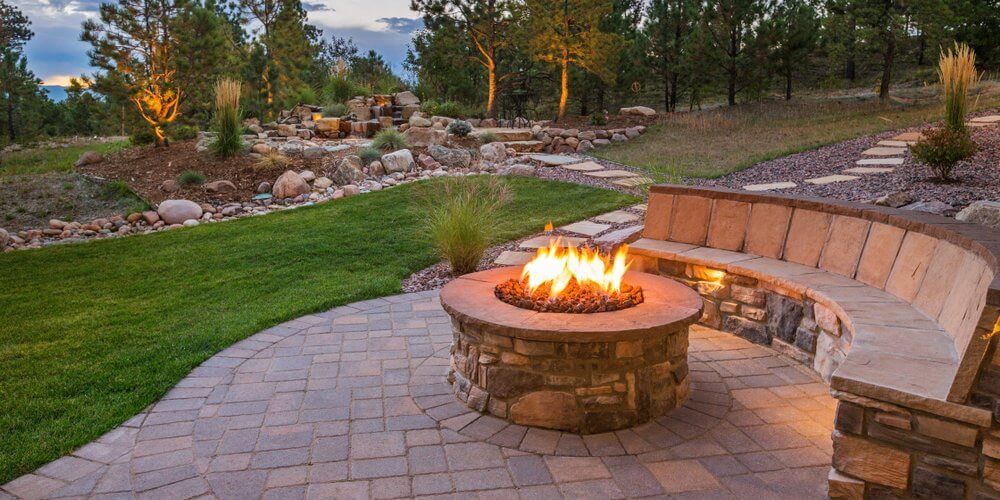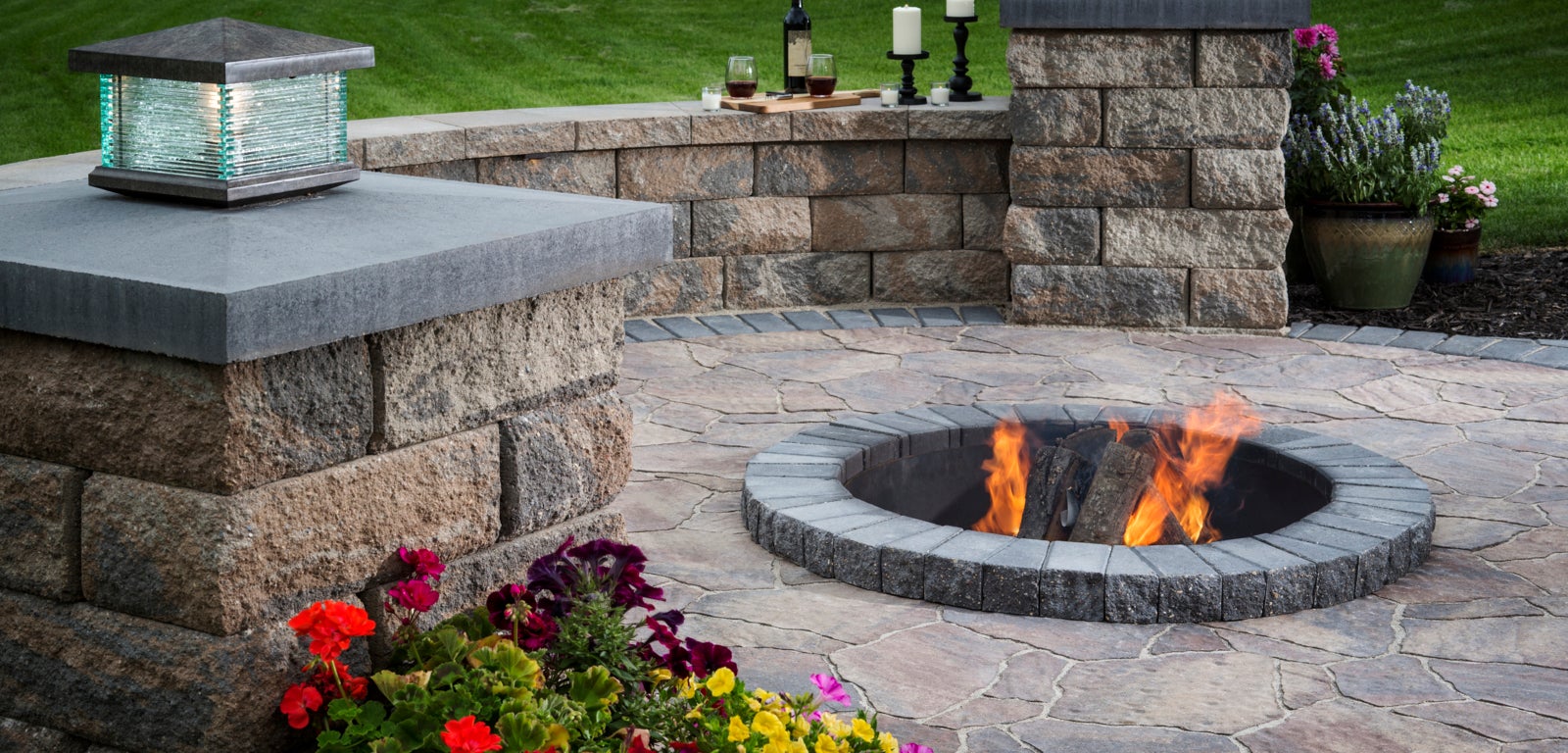Call us at 725-239-9966!
M-F: 8 AM-7 PM PST
Call us at 725-239-9966!
M-F: 8 AM-7 PM PST

Outdoor fire pits have become an increasingly popular feature in outdoor living spaces, providing warmth and a gathering area for social activities. From small, portable gas fires to permanent brick fire pits, there are two main options: above-ground and in-ground fire pits. But which is better for your needs? This complete guide examines the key differences between above-ground and in-ground fire pits, including installation, materials, size, placement, safety, maintenance, and costs to help you decide.
Installing an in-ground fire pit is more complex and expensive, but provides superior durability, safety, and size capacity.
Above-ground fire pits are quicker, cheaper, and easier to install. They can be readily moved but require more frequent maintenance.
While more affordable initially, above-ground fire pits tend to show wear sooner and need replacement within 5 years. In-ground masonry fire pits last for decades.

Installing a backyard fire pit can be a big project, so considering the time, effort, and complexity involved is important.
Above-ground fire pits designed for backyard use are typically easier to set up, often arriving as ready-made products. Many metal fire pits and gas fire pits can be simply assembled with basic tools, though some stone or masonry above-ground fire pits may require more significant building.
Building an in-ground fire pit is more labor-intensive, requiring excavation equipment to dig a hole, potentially 3-4 feet deep. Dealing with underground utilities is also a factor before digging.
The pit then needs lining with non-combustible materials like stone or concrete block, brickwork to make walls and seating areas, installation of metal burn bowls, gas lines if applicable, and finally backfilling with gravel, sand, or dirt.
For these reasons, most homeowners opt to hire landscaping services to construct in-ground fire pits. Costs then typically range from $2,500-$5,000 depending on materials and complexity.
The Verdict: Above-Ground Fire Pits Are Easier DIY Installs
The materials used in your fire pit's construction impact longevity and durability over the years of exposure to high heat.
Above-ground fire pits are commonly metal or powder-coated steel for lightweight mobility but also come in aluminum, stone, and concrete. These hold up well, but metal and aluminum can show signs of wear after 3-5 years.
See how some common fire pit building materials compare regarding durability:
| Material | Durability | Maintenance Needs | Heat Resistance |
|---|---|---|---|
| Metal | Low | High - rust protection required | Moderate |
| Aluminum | Low | High - prone to dents and wear | Moderate |
| Stone | High | Low | Excellent |
| Concrete | High | Low | Excellent |
| Brick | High | Low | Excellent |
In-ground fire pits enable masonry materials like natural stone, concrete block, or brick that withstand heat extremely well. Properly constructed, they can last for decades with minimal maintenance required.
The Verdict: In-Ground Fire Pits Are More Durable
Along with materials, the size and location of your fire pit are also key considerations when deciding which option suits your needs.
In-ground fire pits have a much larger capacity for bigger fires because of their depth and heavy-duty enclosing materials to contain the flames and embers. They can be over 3 feet across - perfect for bonfires with groups.
Above-ground fire pits are smaller for ease of movement, with bowl diameters typically 1-2 feet. This suits pairs or smaller families fine, just don't expect roaring campfire-sized blazes.
A major perk of above-ground fire pits is their flexibility - just place them on a non-flammable deck, patio, or grass area and move them whenever needed. Some can even be taken camping.
With brick fire pits or other in-ground options, placement is permanent once buried. The location must work well for social gatherings and also meet safety clearance regulations - for example being at least 10 feet from property lines and away from overhanging branches.
The Verdict: In-Ground for Size, Above-Ground for Movability

Safely containing fires is critical when installing a fire pit, both to protect surrounding property and prevent accidents. Various factors impact fire safety.
In-ground fire pits offer superior containment compared to above-ground versions. The surrounding masonry walls block spreading embers, buried construction prevents underneath exposure, and deeper pits keep flames further away from people.
With above-ground fire pits, the exposed sides and less stable materials like lightweight metal mean fires must be smaller and constantly supervised. Embers can more easily escape too.
All outdoor fire pits have safety location requirements, such as:
In-ground fire pits allow larger and hotter fires thanks to their containment, so clearance guidelines especially apply. Smaller above-ground fire pits require less buffer distance.
General fire safety rules are important too, like having a bucket of water or hose nearby before lighting any fire, not wearing flammable clothing, supervising children and pets near the pit at all times, and fully extinguishing the flames after each use.
The Verdict: In-Ground Fire Pits Are Safer Overall

While beautiful additions, outdoor fire pits do need regular care and inspection to stay that way long-term. Different levels of effort are needed.
Being exposed and often made from metal materials, above-ground fire pits tend to show dirt, corrosion, and damage faster if not maintained. Repainting fade-prone surfaces, checking for stability issues after relocating, cleaning out old ash and debris before use, and covering from rain and snow when stored are best practices.
Thanks to heavy masonry construction, cleaning and debris removal before firing up a sunken fire pit tends to be the main task, along with checking for any cracks or damage to the interior surface. Repairs like repointing mortar joints may be needed every 5+ years.
The Verdict: Above-Ground Pits Need More Frequent Care
Fire pit costs vary widely, mainly based on:
Gas fire pits also accrue ongoing propane fuel costs, while wood burning pits bring the effort of sourcing firewood - points to weigh up depending on your preferences.
The Verdict: Above-Ground Fire Pits Are Cheaper Upfront
Permanently installed in-ground fire pits cost $300-$5000+ vs $100-$1500 for an above-ground pit bought online and installed yourself. But larger and more customized above-ground fire pits can still meet or exceed this. Consider ongoing costs too.

While portable above-ground fire pits are cheaper and easier to install, permanent in-ground fire pits are better for most homes. They last longer with less care needed. They look nicer, built into the yard.
However, carefully evaluating your needs and site constraints is still important before deciding on the best fire pit option. Checking out this fire pit buying guide can help weigh the pros and cons for your situation.
For an in-ground pit, you simply dig a hole in your desired spot, ensuring it's at least ten feet away from your home or any combustible materials. You then line it with a non-flammable material like a paver or cast iron. Above-ground fire pits can be purchased ready-made or built using bricks or other types of metal.
The campfire smell is mostly influenced by what you’re burning in your fire pit, whether it's wood or gas. Wood-burning ones provide that classic smoky aroma, while gas fire pits do not. However, it's important to follow local regulations on what it's safe to burn in your outdoor space, regardless of the type of fire pit.
Both types can be used for cooking, but the setup might vary. Above-ground fire pits often come with grills that can be placed over the flame, while in-ground fire pits can be used for cooking by placing a cast-iron grate over the flames. Always make sure the fire is well-contained before placing food over it.
Above-ground fire pits are often designed to incorporate a chimney for better smoke control. However, installing a chimney on an in-ground fire pit is more difficult and less common. If smoke control is important, consider an above-ground fire pit with a chimney.
Both in-ground and above-ground fire pits can be used in all seasons, but make sure they are dry and safe for use, especially after heavy rains or snow. Above-ground fire pits can be covered during such weather, making them ready for use once it clears up. Remember to always ensure the area around the fire pit is free from any materials that could potentially catch fire.

{"one"=>"Select 2 or 3 items to compare", "other"=>"{{ count }} of 3 items selected"}
Leave a comment